GPON Optical Module Applications in Networks: Professional Telecom Network Requirements Guide
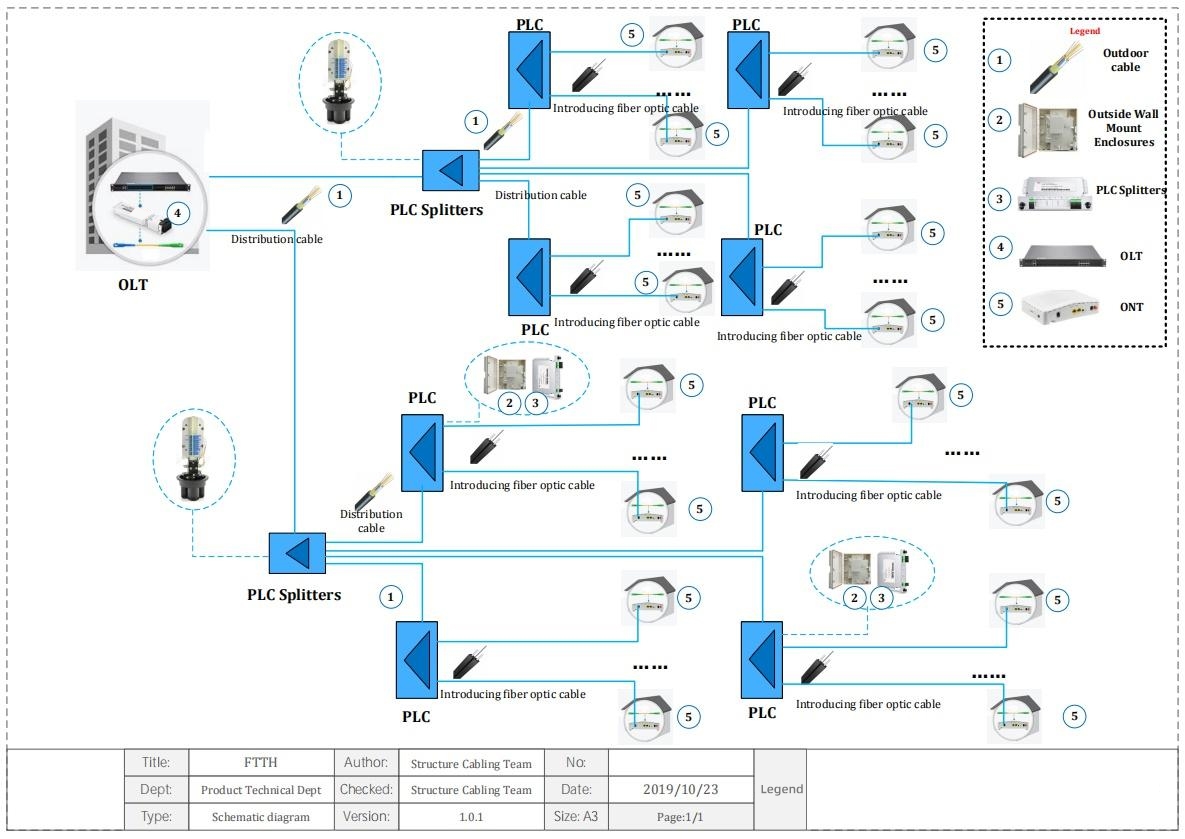
Why do telecom engineers repeatedly watch their well-planned GPON deployments fail within weeks of launching? A major European service provider learned this in a hard and very costly way when a wrong optical module selection caused network-wide service degradation for 50,000 subscribers. It wasn’t about a bad piece of equipment. No, this was a case of mismatched GPON SFP specifications to the specified requirements for their deployment. The right GPON SFP can determine if a network deployment will be a success or failure. Each application scenario requires specific optical specifications in any deployment. An FTTH residential application is not the same as a 5G backhaul application, and standard GPON SFP selection principles don’t address the appropriate GPON SFP, which is why they ultimately fail. In order to avoid these costly mistakes, start with application requirements. Next, run power budget calculations to ensure reliable service in all scenarios — it matters as we head into the future using XGS-PON SFPs.
What Makes GPON SFP Modules Different from Standard Ethernet Modules?
Standard Ethernet modules function similarly to a two-lane street, with the two lanes serving the same function. GPON SFP modules act more like a highway system, with dedicated lanes for the different vehicle types. This is an asymmetric traffic pattern, and therefore is characteristic of passive optical networks. GPON networks require that the wavelengths be coordinated precisely. Standard modules cannot facilitate this. The downstream traffic utilizes one wavelength for the delivery of high-bandwidth content to multiple subscribers at the same time. The upstream wavelengths are utilized to allow individual subscribers to communicate back to the central offices without interfering with one another. To explore the technical differences and architecture of GPON SFP modules in depth, read the Ultimate Guide to GPON SFP, which clarifies how these devices enable effective multi-user connections.
The basis of wavelengths is careful, like radio frequencies where each wavelength offers a different stream of information. They are an important difference of all standard modules, as they do not include a dual-wavelength implementation. All standard implementations would be limited to symmetric point-to-point connections. The wavelengths represent just one of the significant differences. Another distinguishing difference is in how passive splitters are incorporated. GPON SFP module specifications enable optical power division associated with multiple fiber paths without active components. Standard modules would expect single fiber connections at each end.
The final major difference is highlighted in the differences in protocols that these two types of SFP modules handle. GPON encapsulation is unique in that it wraps the data in special frames meant to accommodate the telecom optical environment requirements of timing synchronization, quality markers, and the subscriber’s connection to the GPON. Standard Ethernet framing would not accommodate any of the unique conditions noted here. Standard Ethernet is concerned only with the delivery of the data packets from point to point. GPON protocols are concerned with the provisioning of multiple subscribers and active bandwidth allocation.
 The Regional ISP’s $200K Lesson: Power Budget Classification Mistakes
The Regional ISP’s $200K Lesson: Power Budget Classification Mistakes
Mountain Valley Telecom discovered the hard way about GPON SFP power budget categories in their 2023 suburban extension. Fiber distances averaged 15 kilometers, as calculated by their engineering teams, so they chose Class B+ modules instead of the Class C+ specification they needed. The optical power budget works like flashlights. In order to have a beam of light travel further, users need a stronger battery. The B+ modules provided an adequate amount of power for shorter runs, while the C+ was supposed to meet the power budget requirement for extended suburban deployments where the fiber was traveling through many neighborhoods. Six months later, many subscribers were calling the Mountain Valley support center with service complaints. Subscribers noted they frequently disconnected during peak usage hours, which meant video streaming was stuttering, and VoIP calls were dropping unexpectedly during calls. Their customer churn rate in the affected areas was 18%. Because of an inadequate optical power budget, the distance for power did not reach some of the subscribers. The Class B+ modules only provided a 28 dB power budget when deployment distances required a minimum of 32 dB.
Mountain Valley took a corrective systematic approach to recovery. They found a resolution in three steps. The first step was to map the actual distances of fiber compared to the modules that were installed. Next, the engineering team replaced 847 of the B+ modules with appropriate units classed as C+. Lastly, they put into place protocols for future deployments based on the correct power budget verification. The module replacement project cost $200,000, as they had projected a recovery based on their emergency order of modules and field technician overtime. Two months later, subscriber complaints had gone down by 89%! The overall experience changed their deployment mechanisms. It identified the use of modules incorrectly, as well as future deployments of neighborhoods, with the unfortunate experience of the situation in recovering the organization.
How to Calculate Split Ratios for Different Service Density Requirements?
Calculating GPON split ratios can be compared to dividing up pizza among friends. The more friends you are sharing with, the smaller the slices of pizza will be for each of you. Each optical splitter will share the available bandwidth and the available optical power with the connected subscribers. The quality of service and economics of deployment depend on the split ratio. The basic formula starts with a total downstream capacity of 2.5 Gbps. A 1:32 split ratio will provide each subscriber with about 78 Mbps. A 1:64 split will provide approximately 39 Mbps. A split of 1:128 will mean an individual subscriber is allocated about 20 Mbps. While bandwidth is the most important calculation factor, it is not the only factor. Network topology planning must also take into account the distribution of optical power across the various split paths. With every new split level, optical power is reduced by approximately 3 dB. Thus, it is necessary to design an initial power budget to account for reduced signal strength.
Service level requirements drive ratio selection decisions:
- Premium business services typically require a split ratio of 1:32 where there is guaranteed bandwidth
- Standard residential/family packages can generally service a 1:64 split
- Lower service tiers or basic services can support a split ratio of 1:128. In this case, bandwidth utilization must be monitored and controlled.
Similarly, environmental factors impact optimal splits. Any fiber distance over 15 kilometers would require lower split ratios. A power reserve is also part of service planning. If the environment is likely to experience harsher weather, these conditions are also best suited to a more conservative approach to splitting. Additional power reserves improve quality. Mathematical models cannot account for all ratios. The usage patterns from the subscribers will impact long-term performance. Peak demand conditions will skew mathematical ratios. Growth projections will inherently be part of the split ratio decisions. Smart network topology planning assumes that an organization is weighing the tradeoff between the lower initial deployment costs and future capacity demands.
 Why FTTH Residential Deployments Require Different Modules Than Business Services?
Why FTTH Residential Deployments Require Different Modules Than Business Services?
Residential and commercial fiber deployments are fundamentally different transportation modes. One is focused on cost-sensitive, mass transit. The other requires premium, express service. The choice of an FTTH GPON SFP module exhibits these differences in operational priorities and service levels. Residential deployments are organized around cost-optimization, servicing many thousands of subscribers at a time. Service providers need modules that are bottleneck-free and function at scale. Premium features increase the costs of modules on a per-unit basis. Basic Quality of Service features accommodate most casual home usage.
Business services require a different set of requirements. Guaranteed Service Level Agreements (SLAs) are essential, along with a symmetric allocation of bandwidth. Enterprise clients are expected to pay a premium. They expect dedicated service and no interruptions in the availability of the service. Any mission-critical application cannot handle a shared allocation of resources; for this reason, residential users have an acceptance of these shared-service limitations. Residential and business modules differ significantly in their classification of power requirements. Class B+ modules typically meet the standards for residential FTTH deployment. The distance of the fiber runs, along with the shared bandwidth, reduces the overall power consumption for each module. These modules consume 40% less power than their higher-grade counterparts.
Business applications require higher-end Class C+ specifications, along with an adequate power margin for their dedicated service level. The enhanced optical budget supports longer fiber distances to business parks in suburban or rural settings, for instance, while also ensuring performance predictability during peak times of service. The selection of a module is more than just power requirement levels. Enhanced temperature stability is provided by business-grade units; extended warranty coverage is also included as standard. Priority technical support is also provided. Residential modules aim to optimize deployments for volume efficiencies by design. These modules are easier to install by design; they include less hardware, installation procedures are simplified, and standardized configurations reduce the required training because of the simplified procedures.
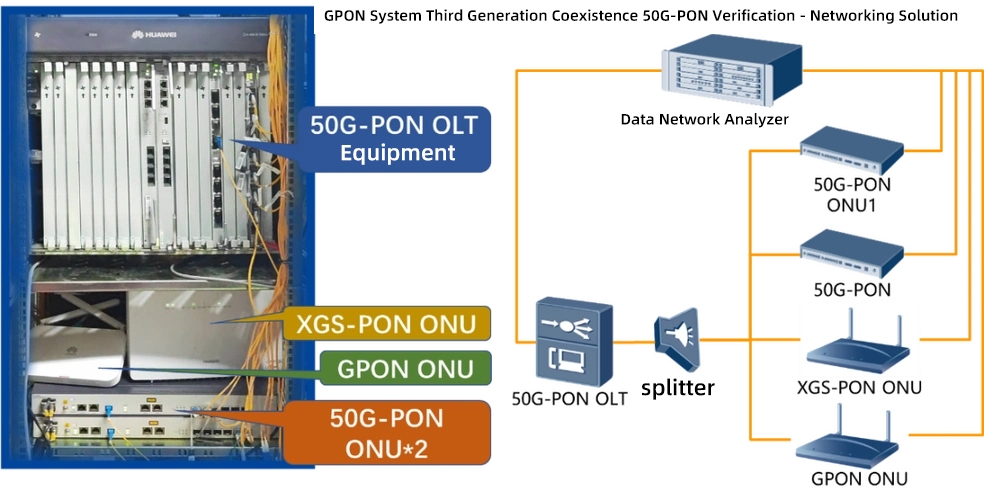
GPON System Third Generation Coexistence 50G PON Verification – Networking
The Urban Apartment Complex Challenge: Scaling ONT SFP Deployments
Metro Heights Towers encountered a serious connectivity issue. This luxury apartment complex with 500 units suffered a widespread service outage. The standard residential modules failed only a few weeks after being turned on. The cause of the issue was consequential electromagnetic interference. A high number of wireless networks, elevator systems, and HVAC equipment all shared the same 40-story high-rise. High-density applications create issues with optical signals. Imagine trying to hear conversations in a crowded concert venue. When optical fibers share tight connections, the interference is likely to lead to crosstalk. There was also additional electrical noise from the building’s infrastructure. Unfortunately, the standard modules could not filter out the electrical noise.
The vertical fiber distribution within the building created additional challenges for the model deployed in each apartment. The Optical Network Terminal Small Form Factor Pluggable (ONT SFP) required a module that could accommodate the complexity of maintaining signal integrity, while also accounting for differences in floor heights and electrical environments on each floor. The standard residential units did not provide adequate shielding against tower-based applications, especially in more concentrated setups. Temperature environments were another consideration. There was equipment in room environments in the basement, and contained utility closets throughout each of the upper floors; there was heightened thermal stability needed for the modules that were installed. Standard residential modules were designed for temperature variations typically found in a single-family home. However, each of the building’s floors had a varying environment, and each of those exceeded a standard residential module threshold.
Metro Heights arrived with a problem-of-practice from the outset. They employed specialized modules for high-density applications. The modules had greater electromagnetic interference rejection features installed. The modules were also rated for an extended temperature range. The installation costs were 60% greater than a standard residential module. However, service calls and complaints were eliminated altogether. The deployment team utilized specialized protocols for fiber-installed modules; fiber management was constructed for multi-dwelling unit environments. Proper separation between active connections was secured. Proper grounding eliminated unnecessary electrical interference, and appropriate mitigation on a floor-by-floor basis throughout the building was conducted.
How Does 5G Backhaul Change GPON SFP Module Requirements?
5G backhaul GPON applications redefine requirements for optical modules. The basic connectivity devices become precision timing instruments. Ultra-low latency requirements also create a requirement for absolute timing precision. Time matters in nanoseconds, not milliseconds. Residential services typically have timing measured in milliseconds. The timing in 5G adoptions works like an orchestra. Every instrument must play together with utter precision. Standard telecommunications modules should provide sufficient connectivity. They just don’t have the timing accuracy required for 5G radio coordination. Industrial-grade modules have additional features. Clock recovery circuits are enhanced. Their jitter reduction capabilities are also necessary for synchronizing timing across the cellular network.
Outdoor cell site installations expose the modules to extreme conditions beyond what indoor telecommunication equipment ever meets. The temperature swing from -40C to 85C must be tracked and the proper components are required. Thermal management systems must also be included in the design as standard modules may be invalidated under repeated exposure to bad conditions. Vibration resistance in applications becomes critical in cell tower sites. The tower mounts the module and it goes through wind load and structural motion. Industrial-grade housing provides reinforced connectors. Shock-absorbing materials address connection failure when the tower sways.
5G backhaul GPON applications diverge from traditional applications through synchronization protocol handling. Supporting the IEEE 1588 Precision Time Protocol (PTP) is required for sub-microsecond timing accuracy that is required for the optical network. Standard telecommunications modules cannot process these protocols that are critical to timing. Optimizing power consumption presents an advantage for cell site locations where a backup battery system will run the site. The more efficient the module, the less cooling it requires. The additional power available extends the runtime of the battery bank as backup power during power grid outages.
The cost of a module can be 200–300% more than standard modules. The guarantee of reliability in a network justifies the cost of the investment for network deployments. 5G service-level agreements demand the cores have 99.999% uptime, and only industrial module designs will meet that demand, even in environmental extremes.
 What Are the Critical Differences Between GPON and XGS-PON Module Requirements?
What Are the Critical Differences Between GPON and XGS-PON Module Requirements?
XGS PON SFP modules function likewise to high-end sports vehicles. Standard GPON modules are more comparable to sedans. Sports cars offer higher velocity but are also more expensive to fuel and maintain. Power usage rises from 2W for GPON modules to approximately 4–6W for XGS-PON modules. Thermal management becomes more of a concern for maintaining 10 Gbps operation. XGS PON SFPs generate far more heat. Enhanced heat sink designs will be required. At some point, active cooling will be necessary. None of this needs to be considered for standard GPON deployments. Backward compatibility creates some complexity around migration requirements for a current network. XGS-PON modules will be required to work in conjunction with existing GPON (legacy) equipment. There will be periods of transition where both are required to work together. There will also be a need for more sophisticated wavelength management. Most importantly, protocol translation will be required.
Mixed-generation deployments work similarly to bilingual conversations. Systems of the old and new generations must be able to communicate successfully. XGS PON SFP modules integrate dual mode operation. It facilitates dual support of GPON at 2.5 Gbps and XGS-PON subscribers at 10 Gbps concurrently. When pricing is assessed, significant price gaps exist. XGS-PON modules will range from three to four times the cost of a standard GPON at first cost. Bandwidth capacity is multiplied by four. This creates a reasonable and favorable value proposition for high-demand applications over time. Migration requirements extend beyond modules being simply removed and replaced. Infrastructure will require upgrading. Existing splitters will need to be assessed whether to remain or be replaced. Fiber management systems may need upgrading. Power distribution will need to account for higher draws. Cooling needs will need to be upgraded.
When it comes to timing of deployment, it will depend on the patterns of subscriber demand and associated revenue. For networks serving bandwidth-intensive applications, the case will be made for immediate scaling to XGS-PON. Conversely, a standard residential service area can delay upgrade to XGS-PON. Plans should include replacement cycles that align with demand for service capacity.
Future-Proofing Strategy: The Telecom CTO’s Technology Roadmap Dilemma
In late 2024, the Chief Technology Officer of Atlantic Communications was faced with a decision estimated at $50 million. Two options were presented. The first option was to upgrade the current GPON infrastructure right away. The second option was to wait to see if the next generation PON technology would stabilize in the market before any upgrades were made. The board of the company was on the side of immediate upgrades to XGS-PON technology. The engineering teams were advocating for waiting for the 50G-PON specifications before any upgrades to the current GPON technology. The dilemma was similar to buying a new car in which next year’s model sounds like they will have huge upgrades. There are still current GPON assets that are performing the necessary operations. Competitors are already advertising 10 Gbps capabilities to enterprise customers.
Planning for the evolution of the network requires broad planning for three key factors. First, if the board knew the equipment will depreciate based on the current depreciation schedules, they would know they have four more years before the natural replacement cycle. Second, demand analytics showed that bandwidth for subscribers was improving, albeit very slowly. There were no immediate demands for 10 Gbps. Third, the roadmap for future PON technology showed that standards for 50G-PON would be available by 2027. Atlantic solution was focused on the degree of modularity of the infrastructure. The technology evolutions could take place, without complete forklift upgrades. The plan was to deploy the XGS-PON in business corridors where demand was evident, while G-PON can continue to be used in residential areas.
The timing was important in the planning of the investment. The approach was to maximize asset utilization over the generational technology, while replacing critical portions on the infrastructure. The fiber distribution and power systems were upgraded to be able to handle the higher speeds in the near future. Optical modules will continue to be G-PON until subscriber demands are established for deploying XGS-PON capabilities. The utilization of the modular plan reduced the overall investment of the GPON system by 35%. Compared to same day upgrades across the network for the GPON system, Atlantic is set up to quickly deploy the 50G-PON type of system as standards are environmentally appropriate and economically justified.
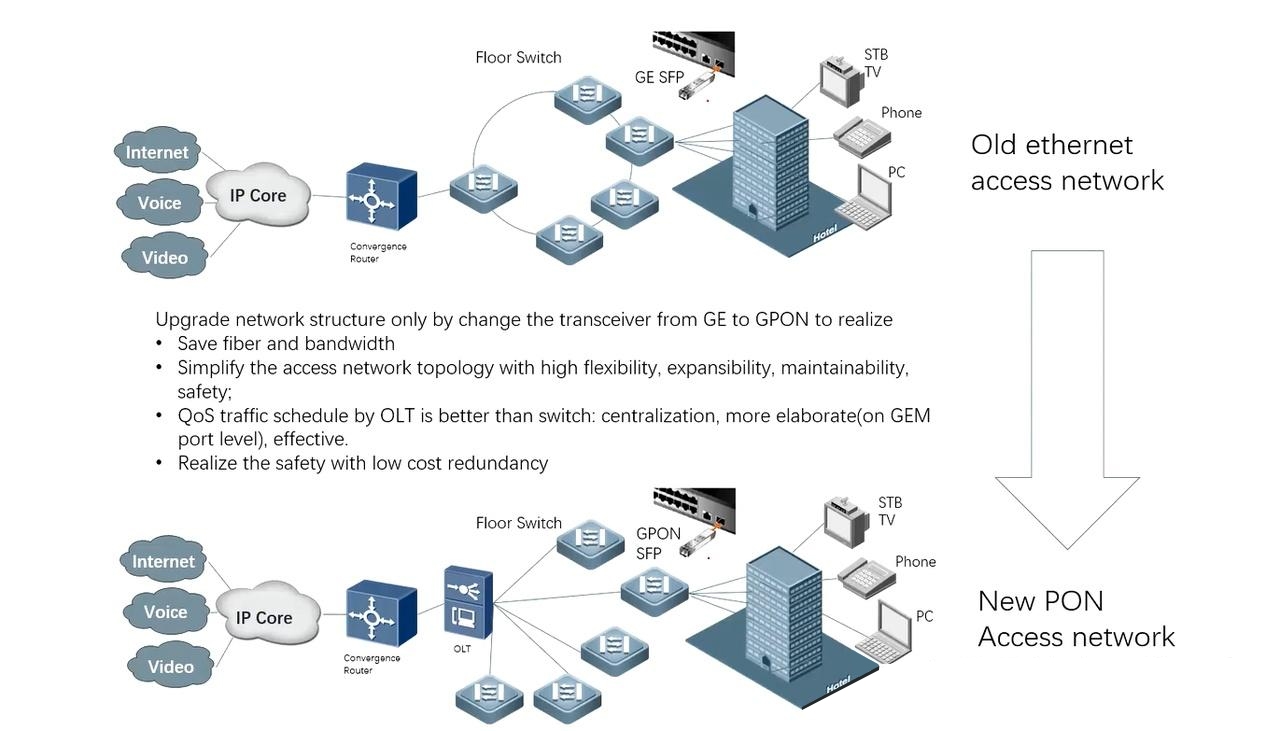
What Makes GPON SFP Modules Different from Standard Ethernet Modules
How to Navigate Vendor Lock-in Versus Interoperability Trade-offs?
Single-vendor strategies are analogous to an exclusive restaurant. It serves a top-end premium service, but it may lack menu flexibility (limitations on menu items). Vendors of GPON products have to balance operational simplicity of using only one vendor against the procurement leverage of using multiple alternatives and vendors. Each vendor will trade off greater resilience with the supply chain of critical network infrastructure for their GPON. The lock-in provides a more efficient channel of support. You can be assured that provisioning your components will be compatible. You will not need to do integration testing if you take a single-source procurement stance. You will know that you can maintain consistent performance characteristics throughout your network. There will be no competitive pressures if you pursue low-cost vendor alternatives.
Interoperability strategy based on standardized products is more like building a house. It is a little more complex at the outset, but it will give you potential flexibility to respond to changes over time, contingent on the multi-vendor ecosystem development stage. Interoperability with support for multi-vendor configurations typically would require some form of certification for all products being used and for these to be tested to verify compatibility. There will be a need to test optical power compatibility. There are also other protocols in addition to power that will need to be tested for conformance and also environmental stress testing.
Risk mitigation in a supply chain requires systematic diversification around suppliers. Suppliers should have geographic regions that they can cover. Suppliers should also have manufacturing bases that are distinct. Primary suppliers’ definition should be limited to a dual-sourcing strategy where a 70/30 vendor split can occur. This helps to keep your pricing competitive while reducing total reliance on single suppliers. Compliance to ITU-T G.984 builds a base for GPON with multi-vendor deployments. Proprietary extensions are often sources of interoperability issues. Problems can arise on management interfaces between products. More validation work will have to be done for non-compliant proprietary products.
Strategic procurement is about balancing the benefits of immediate operational efficiency against that of providing long-term value in a secure supply chain. Networks that function within critical infrastructure will typically maintain qualified sources and alternate supply chains. Although primary vendors may provide superior integration, supply chain diversification provides more of an insurance value across mission-critical telecommunications networks deployed over critical communications infrastructure.
 Supply Chain Resilience: Building Redundant Module Sourcing
Supply Chain Resilience: Building Redundant Module Sourcing
During 2022, component shortages caused the average delay of GPON deployments to grow to 4-6 months with various major service providers. Managing the supply chain became a strategic necessity during this time of disruption to deployments. Service providers who were reliant on single-source suppliers suffered cascading delays to projects. Subscribers were unable to be activated timely, causing further delays in their activation and increasing backlogs of subscriber installations. Effective inventory management is akin to sustaining emergency supplies. An inventory level that is too low can present a crisis. Having excess inventories can be a waste of working capital. Inventory management is about maximizing a balance of carrying costs against being ready for deployment. Any fluctuations in demand cycles must also be taken into consideration.
Adding vendors requires the orderly validation of performance against stated specifications. Competitor testing on specifications is simply a basic compatibility test. Alternate vendors need to be proven to have the same environmental specifications as the primary vendor. Metrics for reliability must be proven in order to be comparable. Verification of quality standards for either vendor must be performed. Buffers in inventory that are greater than 3 months are commonly safe against disruption in supply. Avoiding carrying costs is critical. Strategic stockpiling is only invested in modules consumed at higher volumes during deployments; multiple scenarios deploy the same modules. Specialized variants with limited applications have a reduced focus.
Diversifying suppliers who have different geographic bases of manufacturing diminishes risk in any one region. Natural disasters present their own risks. Political instability brings risk as well. Trade restrictions to suppliers directly affect the ability to supply. Vendor qualification should not only be on supply, but also on the audits completed on manufacturing facilities. Assertions of financial stability give the added assurance that a supplier can supply for a duration of time. Advanced inventory management systems keep track of inventories available to deployments from the requirements for the pipeline of deployments. Procurement actions are triggered before schedules of projects are impacted by shortages. Real-time visibility can lessen the need for reactive purchasing. When procurement is targeted toward schedules, premium pricing is often incurred as well. Lastly, extended lead times often push risk caused by either supply chain or the procurement cycle itself.
Conclusion
Mastering the GPON SFP turns managed, reactive network management into a strategic engineering endeavor of infrastructure planning. Systematic module selection can mitigate the risk of costly mistakes in deployment. Operational efficiencies become optimized as deployments serve a range of service requirements.Professional optimization of a telecom network requires the analysis of precise matching of optical specifications and what is capable under deployment. Power budget calculations determine reliability of the operational effort. Split ratio analysis determines performance from the deployment. Environmental factors determine what level of service quality can be provided.
Transform your GPON deployments from guesswork to precision engineering from the start of the deployment. Systematically, connected to operationally demanding conditions, objectively steers each evaluation of optical module specs to their operational demands. It involves strategic technology roadmaps to steer these decisions.

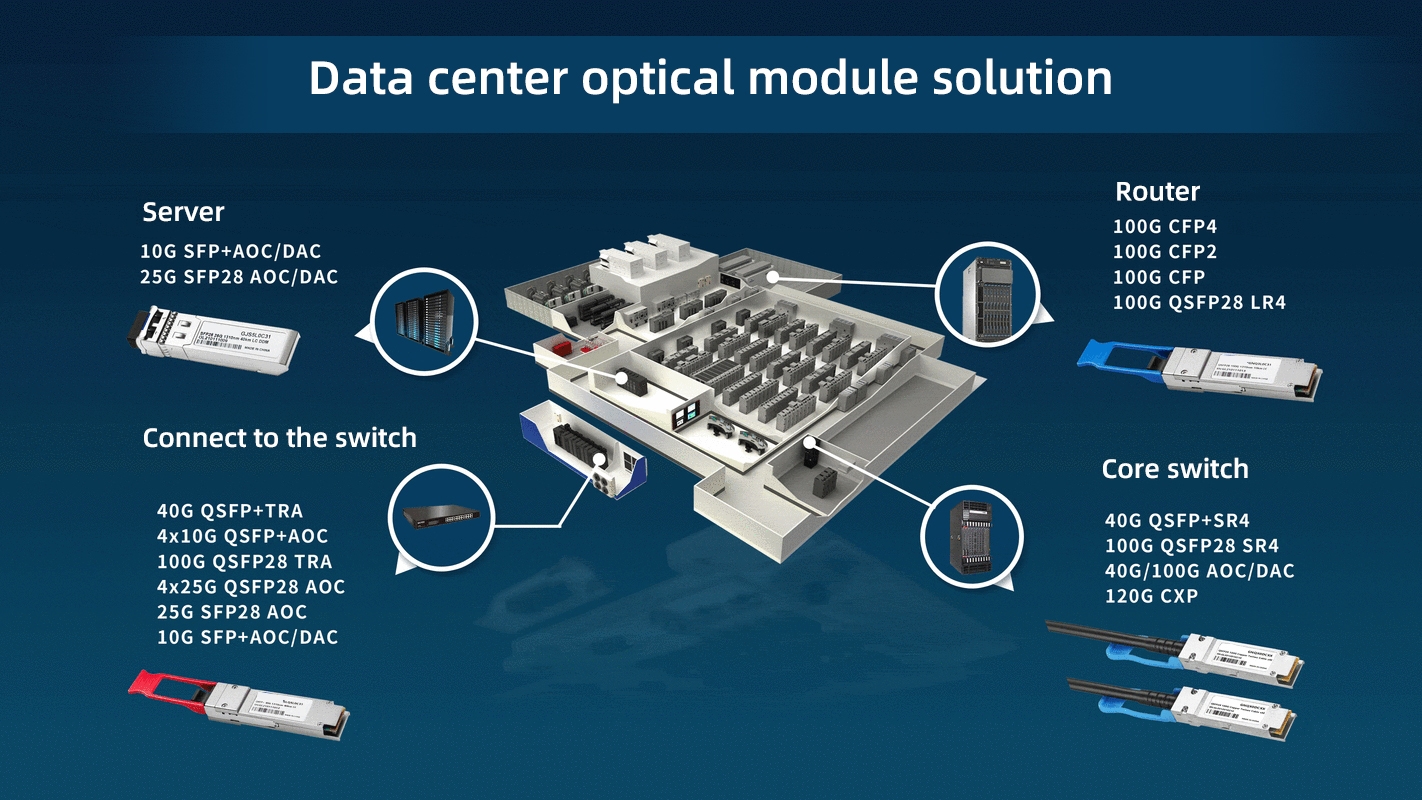 The Regional ISP’s $200K Lesson: Power Budget Classification Mistakes
The Regional ISP’s $200K Lesson: Power Budget Classification Mistakes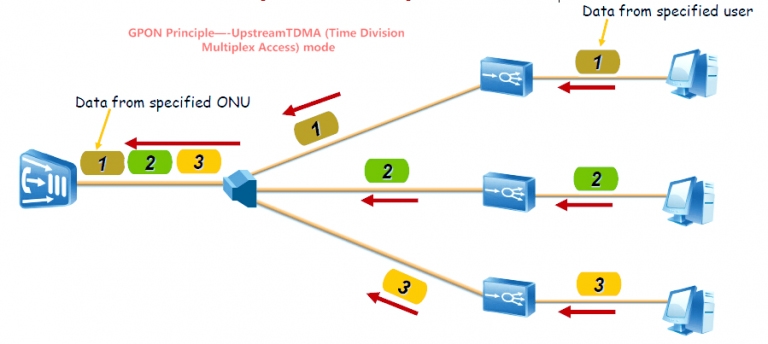 Why FTTH Residential Deployments Require Different Modules Than Business Services?
Why FTTH Residential Deployments Require Different Modules Than Business Services?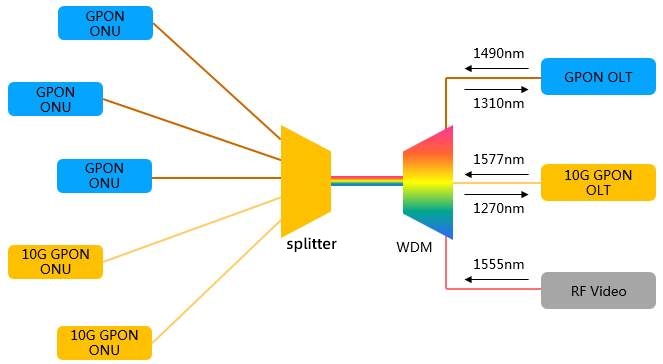 What Are the Critical Differences Between GPON and XGS-PON Module Requirements?
What Are the Critical Differences Between GPON and XGS-PON Module Requirements?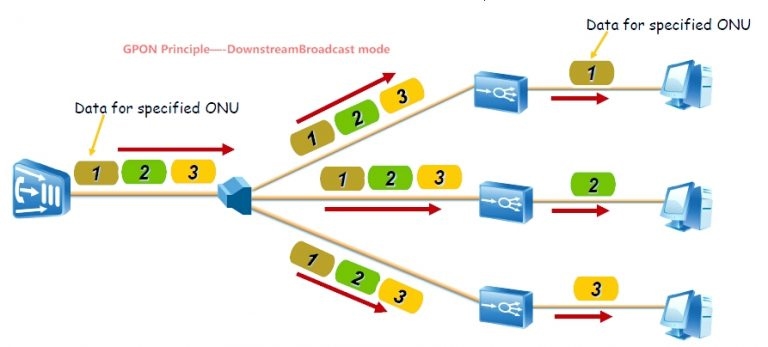 Supply Chain Resilience: Building Redundant Module Sourcing
Supply Chain Resilience: Building Redundant Module Sourcing